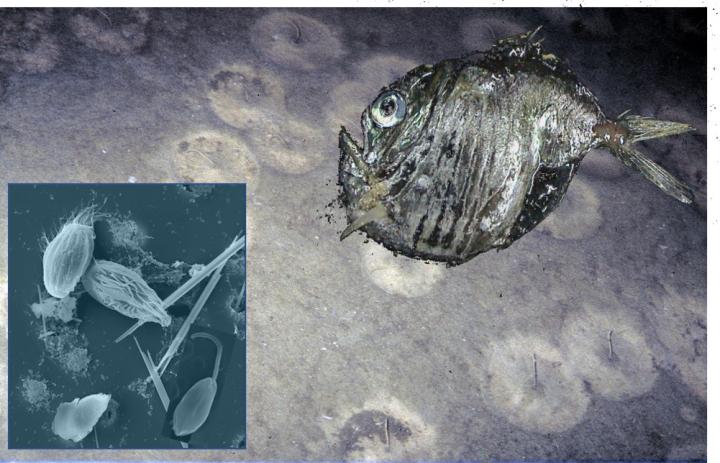
Credit: UoC / Hartmut Arndt
Ecologists at the University of Cologne’s Institute of Zoology have for the first time demonstrated the enormously high and also very specific species diversity of the deep sea in a comparison of 20 deep-sea basins in the Atlantic and Pacific Oceans. Over a period of 20 years, a research team led by Professor Dr Hartmut Arndt at the Institute of Zoology has compiled a body of data that for the first time allows for a comparison of the diversity of existing eukaryotes – organisms with a cell nucleus. Sediment samples from depths of 4000 to 8350 meters, the cultivation and sequencing of populations found exclusively in the deep sea, and finally molecular analysis using high-throughput techniques are yielding a comprehensive picture of biodiversity in the deep sea. The research results have been published in Communications Biology under the title ‘High and specific diversity of protists in the deep-sea basins dominated by diplonemids, kinetoplastids, ciliates and foraminiferans.’
The deep-sea floor at water depths of more than 1000 metres covers more than 60 per cent of the Earth’s surface, making it the largest part of the biosphere. Yet little is known about the diversity, distribution patterns, and functional importance of organisms in this extreme and gigantic habitat. What is certain is that climate change – e.g. through warming, acidification, or oxygen depletion – is already having an impact on this sensitive ecosystem. In addition, the deep sea is under pressure from the growing interest in raw material extraction.
Scientists previously assumed that deep-sea basins, which are all characterized by the same low temperature (0-4°C), salinity (about 3.6 per cent), high pressure (300-500bar depending on depth), and very similar sediment, have relatively low – and also the same – species diversity. Moreover, most deep-sea studies to date have focused on specific habitats such as hydrothermal vents and saltwater lenses. Until now, there has been a lack of data on the diversity of deep-sea plains, which make up by far the largest portion of the seafloor. ‘By using a new approach of combined molecular biology and cultivation-based studies, we found substantial, highly specific local differences in organism communities with little overlap to the organism communities of coastal regions,’ said Dr Alexandra Schönle, lead author of the study.
Among the life forms, unicellular organisms (protists), which have been mostly overlooked in current deep-sea food web models, dominated. In addition to the calcareous chambered organisms (foraminifera) traditionally considered in studies, whose deposits dominate vast areas of the world ocean, tiny naked protists dominated, including bacterivorous and parasitic flagellates and ciliates, whose diversity significantly exceeded that of multicellular animals. Also surprising was the high proportion of parasitic forms (10 to 20 per cent), which was previously unknown on this scale. Many of them are likely to infect animals such as crustaceans or fish, but others are likely to infect protozoa.
‘Our results show that organic matter on the deep-sea floor is recycled through different and previously insufficiently considered components of the microbial food web, and then passed on in the food web. This is crucial for our understanding of global carbon flux,’ explains Professor Dr Hartmut Arndt. ‘Given the significant differences in the biodiversity of the individual deep-sea basins and their importance in the global context, the economic exploitation and foreseeable devastation of individual deep-sea basins and the sparing of other deep-sea basins seems absurd.’
###
Media Contact
Hartmut Arndt
[email protected]
Related Journal Article
http://dx.




